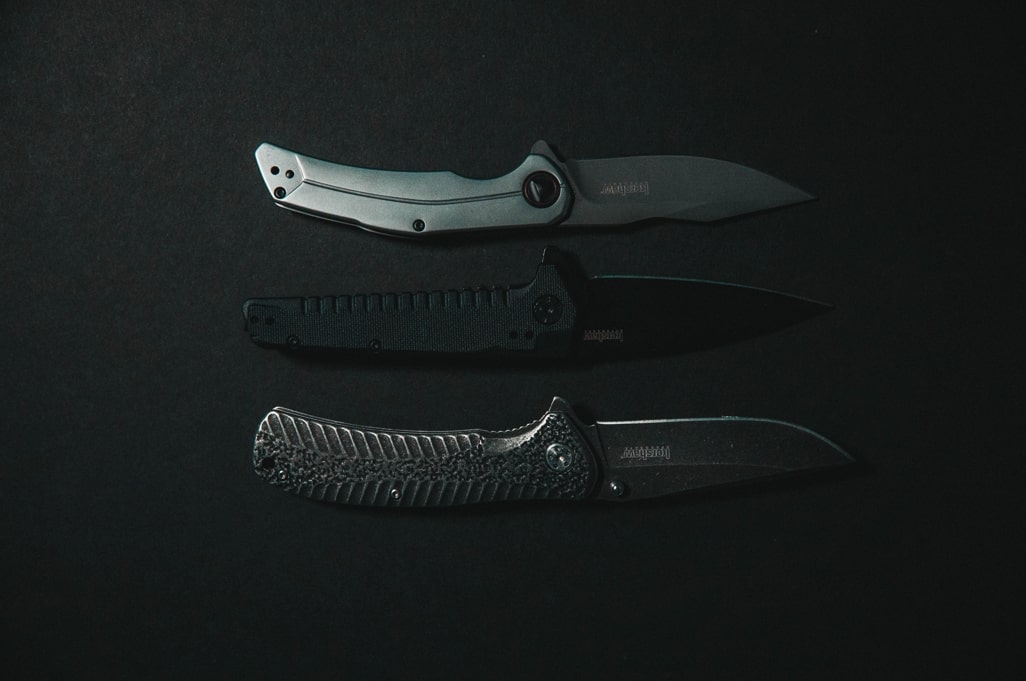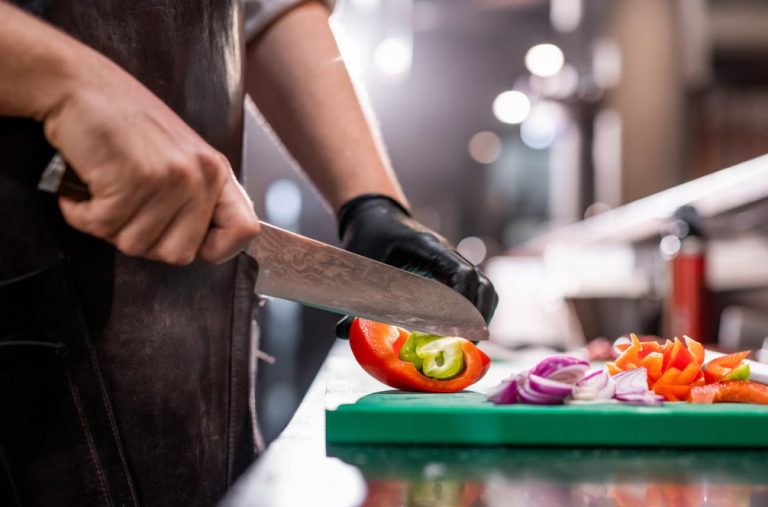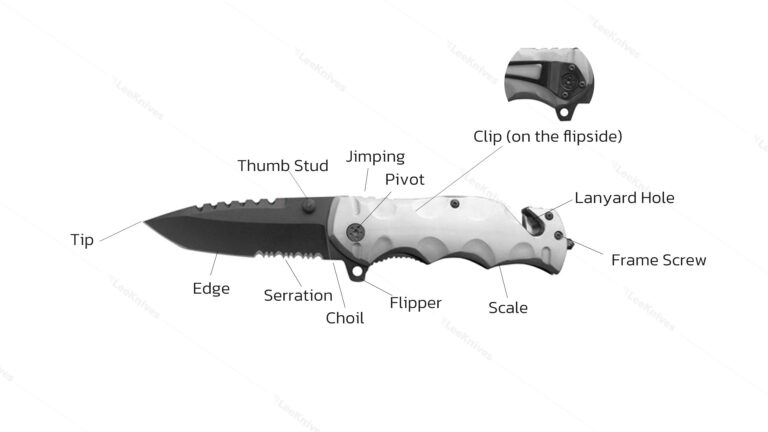Pocket knives have been essential tools for centuries, serving various purposes from survival and self-defense to everyday utility. One of the most critical elements of a pocket knife’s design is its blade shape. The blade shape determines the knife’s performance, functionality, and suitability for specific tasks.
In the following sections, we will explore a wide range of blade shapes, from the classic to the unconventional, each with its own set of characteristics. We will discuss the general design of each blade shape, its best uses, as well as the advantages and disadvantages it brings to the table. Without further ado, let’s embark on this journey through the diverse world of pocket knife blade shapes.
Clip point/Bowie
The Clip Point/Bowie blade shape is a classic and versatile design that features a concave or straight back with a clipped well-defined point. The clipped point is characterized by a slight curve on the back of the blade that results in a fine, sharp tip. The spine typically curves downwards towards the tip, allowing for precise control during piercing and slicing tasks. The blade’s belly may have a gentle curve, making it suitable for a wide range of cutting needs.
Best uses
- Piercing: The sharp and fine tip of the Clip Point/Bowie blade is perfect for piercing tasks. It excels in tasks like opening packages, drilling holes, or detail work.
- Slicing: The curved belly of the blade is excellent for slicing through materials, making it a versatile choice for everyday cutting needs.
- Self-Defense: The sharp point and versatile cutting edge of the Clip Point/Bowie make it an effective option for self-defense and tactical applications.
Advantages
- Versatility: The Clip Point/Bowie is a versatile blade shape, suitable for various tasks.
- Precision: The sharp, fine tip provides excellent control for detail work.
- Piercing power: Ideal for tasks that require precise punctures or penetration.
Disadvantages
- Less belly: The clipped point design may result in a shorter belly compared to other blade shapes, limiting its effectiveness for certain slicing tasks.
- Tip fragility: The fine tip, while great for precision, can be more susceptible to breaking or chipping if subjected to excessive lateral force.
The Clip Point/Bowie blade shape is an iconic design that blends the best of both worlds, offering piercing precision and slicing versatility. It’s a popular choice for those who value a well-rounded pocket knife that can handle a wide range of cutting tasks.

Sheepsfoot blade
The Sheepsfoot blade shape is characterized by its straight edge and a gently curving unsharpened back, which creates a tip that’s relatively flat and squared off. This design results in a blade with a distinctive and safe profile, often with a subtle curve near the tip for added control.
Best uses
- Safety: Sheepsfoot blades are known for their safety due to their lack of a sharp point. They’re ideal for tasks that require minimizing the risk of accidental punctures, such as slicing open boxes or ropes without damaging the contents.
- Precision cutting: The straight edge and squared-off tip provide excellent control for detail work and precision cutting.
- Rescue and emergency situations: The Sheepsfoot blade is commonly found in rescue and emergency tools, as it can be safely used to cut seatbelts, clothing, or other materials in close proximity to the body.
Advantages
- Safety: The absence of a pointed tip makes it less likely to accidentally puncture or damage objects.
- Control: The straight edge and squared-off tip provide excellent control and precision for fine cutting tasks.
- Versatility: While it excels in safety and precision, the Sheepsfoot blade can handle a variety of cutting tasks.
Disadvantages
- Reduced piercing capability: The lack of a sharp point limits its piercing capabilities, making it less suitable for tasks that require penetration.
- Limited slicing: The flat edge of the Sheepsfoot blade may not be as efficient for slicing through dense or fibrous materials as other blade shapes.
The Sheepsfoot blade shape is a practical choice for those who prioritize safety and precision in their cutting tasks. Its unique design makes it a valuable tool in specific situations where minimizing the risk of accidents is crucial.
Buy Wholesale Knives and Start Scaling up with Us Today
Contact us and connect with a sales rep to get a free quote.
Wharncliffe
The Wharncliffe blade shape is recognized for its straight edge that extends from the handle to the tip in a continuous, unbroken line. Unlike some other blade shapes, the Wharncliffe has a flat, uncurved edge and a straight spine, resulting in a tip that’s essentially level with the spine. This design offers a unique and useful cutting profile.
Best uses
- Precision cutting: The straight edge of the Wharncliffe blade makes it exceptionally well-suited for precise and controlled cutting, such as opening boxes, cutting paper, or whittling.
- Safety: The absence of a belly or a curved edge minimizes the risk of accidental slicing or punctures, making it ideal for tasks where control and safety are paramount.
- Detail work: Craftsmen and artists often favor Wharncliffe blades for their ability to perform intricate, detail-oriented tasks with ease.
Advantages
- Precise cutting: The straight edge and tip provide excellent control for fine, detailed cutting tasks.
- Safety: The lack of a curved edge minimizes the risk of unintended cutting, making it a safe choice for many applications.
- Versatility: The Wharncliffe blade’s versatility lies in its ability to excel at precision cutting tasks.
Disadvantages
- Limited slicing: The lack of a curved edge limits its efficiency for slicing through dense or fibrous materials, which might require a more curved blade shape.
- Reduced penetration: The straight, level tip is less suitable for tasks that require penetration or piercing.
The Wharncliffe blade shape is a favorite among those who require precise, controlled cutting without the risk of accidentally damaging what lies beneath the material being cut. Its unique design makes it a valuable tool for a variety of applications.
Cleaver
The Cleaver blade shape is instantly recognizable for its large, flat, and rectangular blade with a straight edge. It’s reminiscent of traditional cleavers used for chopping through meat and bone. While pocket knife Cleaver blades are typically smaller, they maintain the iconic rectangular profile.
Best uses
- Chopping: The Cleaver excels at chopping tasks, making it well-suited for food preparation, such as slicing through vegetables, meat, and poultry.
- Slicing: Its broad, flat edge allows for efficient slicing of various materials, including fruits, vegetables, and even cardboard.
- Elegant EDC: Some pocket knife enthusiasts appreciate the Cleaver’s unique and bold design for everyday carry (EDC) purposes.
Advantages
- Chopping power: The Cleaver’s design is optimized for chopping tasks, allowing for efficient and controlled cuts.
- Versatility: It can perform slicing tasks with ease, making it a versatile choice for both culinary and general cutting needs.
- Distinct aesthetic: The Cleaver’s distinctive design sets it apart and appeals to those who value a unique EDC tool.
Disadvantages
- Bulky: Due to its broad blade shape, Cleaver pocket knives can be bulkier and less pocket-friendly than other options.
- Limited precision: The design is less suitable for precision cutting tasks due to its large and less pointed tip.
The Cleaver blade shape is a bold and practical choice for those who value chopping power and a distinctive design in their pocket knife. It’s an excellent option for various cutting tasks, especially those involving food preparation.
Recurve blade
A Recurve blade shape is characterized by a subtle concave curve along the cutting edge, which can range from a slight curve to a pronounced one. This curve allows for a unique cutting profile that combines elements of both straight and curved blades. Recurve blades often have a sharp point and are versatile in design.
Best uses
- Slicing: The curved edge of a Recurve blade is well-suited for slicing through various materials, offering control and efficiency.
- Pull cuts: The curved design excels in pull cuts, making it effective for draw and slicing motions.
- Outdoor tasks: Recurve blades are favored for outdoor and survival tasks, such as cutting rope, stripping bark, or processing wood.
Advantages
- Versatility: The Recurve design combines the benefits of both straight and curved blades, making it suitable for a wide range of cutting tasks.
- Efficiency: The curve provides an efficient cutting profile, particularly for pull cuts and slicing tasks.
- Pointed tip: Many Recurve blades have a pointed tip, enhancing their piercing capabilities.
Disadvantages
- Sharpening: The curved edge can be slightly more challenging to sharpen than straight edges.
- Limited detail work: While versatile, Recurve blades may not be as precise for fine detail work as some other blade shapes.
Recurve blades offer a versatile and efficient cutting profile, making them well-suited for a variety of tasks. Their unique design combines elements of straight and curved blades, providing a practical tool for both everyday use and outdoor adventures.
Kukri
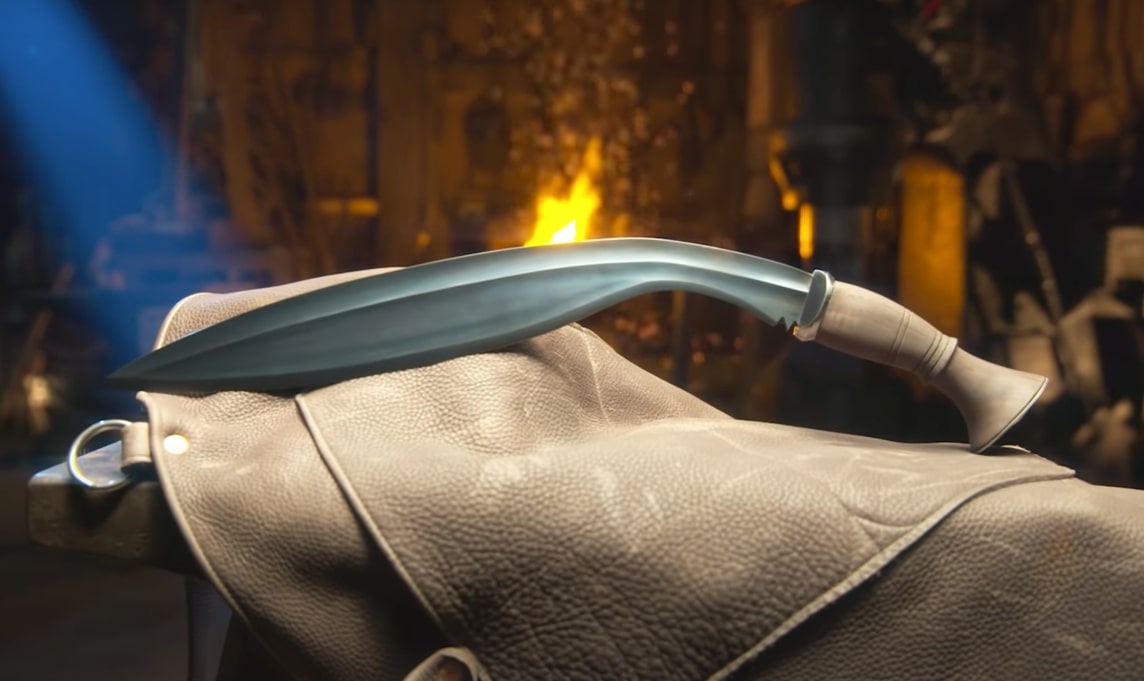
The Kukri blade shape is perhaps one of the most iconic and recognizable blade designs globally, hailing from the Himalayan region. It features a distinctive, inwardly curved blade with a pronounced belly. The spine of the blade is often notched, enhancing the Kukri’s unique appearance.
Best uses
- Chopping: The Kukri excels at chopping tasks, making it a versatile tool for cutting through wood, brush, and other dense materials.
- Slicing: The pronounced belly of the blade allows for efficient slicing, ideal for food preparation and various cutting tasks.
- Utility and tradition: Kukris hold a significant cultural and traditional value, often used as multipurpose tools and weapons by the Gurkha soldiers.
Advantages
- Chopping power: The Kukri’s inward curve and weight-forward design provide exceptional chopping power.
- Slicing efficiency: The pronounced belly is excellent for efficient slicing and versatile cutting needs.
- Cultural significance: Kukris carry deep cultural and historical significance in the regions where they are traditionally used.
Disadvantages
- Size and weight: Kukris can be relatively large and heavy, making them less suitable for everyday carry or precision cutting.
- Specialized: While versatile, Kukris are particularly designed for chopping and may not excel in tasks requiring fine precision.
The Kukri blade shape is a symbol of tradition and functionality, renowned for its chopping power and versatility. Whether used as a tool or a cultural artifact, the Kukri holds a special place in the world of knives.
Buy Wholesale Knives and Start Scaling up with Us Today
Contact us and connect with a sales rep to get a free quote.
Persian
The Persian blade shape is instantly recognizable for its gracefully curved and elongated design, inspired by the traditional blades of the Middle East, particularly Iran. It features a pronounced belly and a sweeping curve, giving it a distinct and elegant appearance.
Best uses
- Slicing: The Persian blade excels in slicing tasks, thanks to its pronounced belly and curved design, which allows for a smooth, efficient cut.
- Detail work: The pointed tip and curvature make it well-suited for precision tasks and intricate cutting work.
- Aesthetics: Persian blades are often highly ornamental, making them prized collector’s items.
Advantages
- Slicing precision: The pronounced belly and curve provide exceptional slicing precision and efficiency.
- Pointed tip: The pointed tip is perfect for detail work and controlled cutting.
- Aesthetic appeal: Persian blades are often regarded as works of art, valued for their aesthetic qualities.
Disadvantages
- Limited versatility: While the Persian blade excels in slicing and detail work, it may not be as well-suited for heavy-duty cutting or chopping tasks.
- Fragility: The pronounced curve and pointed tip can make the blade more susceptible to damage if used for tasks that exceed its capabilities.
The Persian blade shape is a fusion of functionality and artistry, offering exceptional slicing precision and aesthetics. Whether as a practical tool or a collector’s piece, the Persian blade showcases the rich history and craftsmanship of its region of origin.
Straight back
The Straight Back blade shape is characterized by a flat back with a straight cutting edge that slopes gently from the spine to the tip. Unlike some other blade shapes, the Straight Back maintains a consistent thickness from base to tip, providing a strong and sturdy design.
Best uses
- General utility: The Straight Back blade is highly versatile and excels in a wide range of general cutting tasks, including slicing, chopping, and everyday use.
- Strength and durability: Its robust design makes it well-suited for heavy-duty tasks, such as outdoor activities, construction, and survival situations.
- Ease of sharpening: The simple, straight edge is easy to sharpen and maintain, making it an excellent choice for those who appreciate low-maintenance tools.
Advantages
- Versatility: The Straight Back design is a versatile choice, suitable for various cutting tasks.
- Strength: Its robust construction provides excellent durability and can handle challenging cutting tasks.
- Ease of maintenance: The straight edge is straightforward to sharpen, ensuring longevity.
Disadvantages
- Limited precision: While versatile, the Straight Back blade may not provide the same level of precision for detail work as some specialized blade shapes.
- Lack of unique features: It may lack the unique design features and specialized benefits of other blade shapes.
The Straight Back blade shape is a reliable and versatile choice for those who require an all-purpose cutting tool that can handle a wide range of tasks. Its strength and durability make it well-suited for outdoor adventures, construction work, and general utility.
Drop point

The Drop Point blade shape is characterized by a curved, sloping spine that “drops” from the handle to the tip of the blade, creating a lowered and broad, yet pointed tip. This design is both practical and versatile, making it one of the most popular blade shapes for pocket knives.
Best uses
- General utility: The Drop Point design excels in a wide range of everyday cutting tasks, from opening packages to food preparation.
- Versatility: It provides a balance of precision and strength, making it a versatile choice for both slicing and piercing tasks.
- Hunting and outdoor activities: The Drop Point is a favored choice for hunting knives due to its ability to field dress game effectively.
Advantages
- Versatility: The Drop Point offers a versatile cutting profile suitable for numerous tasks.
- Strength and control: The broad, curved spine and pointed tip provide strength and precise control.
- Ease of sharpening: The simple, continuous curve is easy to sharpen and maintain.
Disadvantages
Lack of Specialization: While it’s versatile, the Drop Point may not excel in specialized tasks like slicing or piercing, where other blade shapes may have an edge.
The Drop Point blade shape is a popular choice for pocket knives due to its versatile design, making it suitable for various everyday tasks, outdoor activities, and hunting. Its balance of strength, control, and ease of maintenance makes it a reliable and practical option.
Tanto and reverse tanto
The Tanto blade shape is characterized by a straight edge that meets a sharply angled point, creating a distinct, angular profile. The Reverse Tanto, on the other hand, features a similarly angled point, but with the curve on the opposite side of the blade. These designs were originally inspired by Japanese sword shapes.
Best uses
- Piercing: Both Tanto and Reverse Tanto blades excel in piercing tasks due to their reinforced and sturdy tips.
- Utility: They are versatile for general utility tasks, such as opening boxes, cutting ropes, or performing detail work.
- Tactical and self-defense: The Tanto and Reverse Tanto are often favored for tactical and self-defense purposes due to their piercing capabilities.
Advantages
- Strength: The angular point of both blade shapes enhances their strength and piercing ability.
- Versatility: They are versatile, suitable for a range of everyday and tactical tasks.
- Distinct aesthetics: Their unique design appeals to those who appreciate knives as both tools and works of art.
Disadvantages
- Limited slicing: The angular point and lack of a curved belly make them less efficient for slicing tasks compared to other blade shapes.
- Complex sharpening: The multiple angles and straight edges can make sharpening these blades more challenging for some users.
The Tanto and Reverse Tanto blade shapes are renowned for their strength, piercing power, and versatility, making them popular choices for those who value tactical capabilities and appreciate unique knife designs.
Spear point
The Spear Point blade shape is defined by a symmetrical, pointed design where the blade tapers to a central point, much like a spear or a dagger. The top edge of the blade typically mirrors the lower edge, creating a balanced and sharp point.
Best uses
- Piercing: The Spear Point excels in piercing tasks, making it an ideal choice for thrusting and detailed work.
- Dual cutting edges: Its double-edged design allows for effective cutting from both sides, enhancing versatility.
- Tactical and self-defense: The Spear Point’s ability to pierce and cut from both sides makes it a favored choice for tactical and self-defense applications.
Advantages
- Piercing precision: The sharp point and balanced design provide exceptional control for piercing tasks.
- Versatility: The dual cutting edges allow for versatility in cutting and self-defense applications.
- Elegant aesthetics: The symmetric, pointed design lends a certain elegance to the knife’s appearance.
Disadvantages
- Lack of belly: The lack of a pronounced belly limits its efficiency for slicing tasks compared to other blade shapes.
- Complex sharpening: The dual-edged design can be more challenging to sharpen, and it requires careful maintenance.
The Spear Point blade shape is a symbol of precision and versatility, favored for its piercing capabilities and symmetric design. Whether as a practical tool or a tactical weapon, the Spear Point is a unique and effective choice.
Clip
The Clip blade shape features a curved spine and a pointed, slightly concave cutting edge, which often resembles the shape of a clipped toenail or a crescent moon. This design allows for versatility and precision in various cutting tasks.
Best uses
- Everyday tasks: The Clip blade is well-suited for everyday tasks such as opening packages, slicing, and detailed cutting work.
- Utility: Its versatile design makes it a practical choice for general utility and outdoor activities.
- Detail work: The pointed tip and curved edge offer excellent control for precision cutting and detail work.
Advantages
- Versatility: The Clip blade is a versatile choice, suitable for a wide range of everyday cutting tasks.
- Precision: The pointed tip and curved edge provide control for detail-oriented tasks.
- Ease of sharpening: The simple curved design is easy to sharpen and maintain.
Disadvantages
- Less strength for heavy cutting: While versatile, the Clip blade may not be as efficient for heavy chopping or piercing tasks.
- Limited slicing: The slightly concave edge may not be as efficient for slicing dense materials compared to some other blade shapes.
The Clip blade shape is a versatile and practical choice for those who appreciate precision and control in their cutting tasks. Its curved edge and pointed tip make it ideal for everyday use, utility, and detail work.
Dagger
The Dagger blade shape is characterized by a symmetrical, double-edged design that tapers to a needle-like point. This design is reminiscent of a traditional dagger, offering two sharp edges that meet at the central point, making it highly effective for piercing.
Best uses
- Piercing: The Dagger excels in piercing tasks due to its double-edged, needle-like point, making it a favored choice for self-defense and combat.
- Dual cutting edges: Its double-edged design allows for effective cutting from both sides, enhancing versatility.
- Tactical and self-defense: The Dagger’s design and dual cutting edges make it a valuable tool for tactical and self-defense applications.
Advantages
- Piercing precision: The sharp point and double-edged design provide exceptional control for thrusting and piercing tasks.
- Versatility: The dual cutting edges allow for versatility in cutting and self-defense applications.
- Tactical effectiveness: The Dagger blade is highly favored in tactical scenarios for its ability to deliver precise, powerful thrusts.
Disadvantages
- Limited slicing: The Dagger blade may not be as efficient for slicing tasks as it is primarily designed for piercing.
- Complex sharpening: The double-edged design can be more challenging to sharpen and maintain.
The Dagger blade shape is an iconic symbol of precision and tactical effectiveness, favored for its piercing capabilities and double-edged design. Whether used for self-defense or as a collector’s item, the Dagger blade is both practical and distinctive.
Hawksbill
The Hawksbill blade shape is instantly recognizable for its distinct and curved design that resembles the shape of a hawk’s beak. It features a concave curve along the cutting edge, creating a pointed and sharply hooked tip.
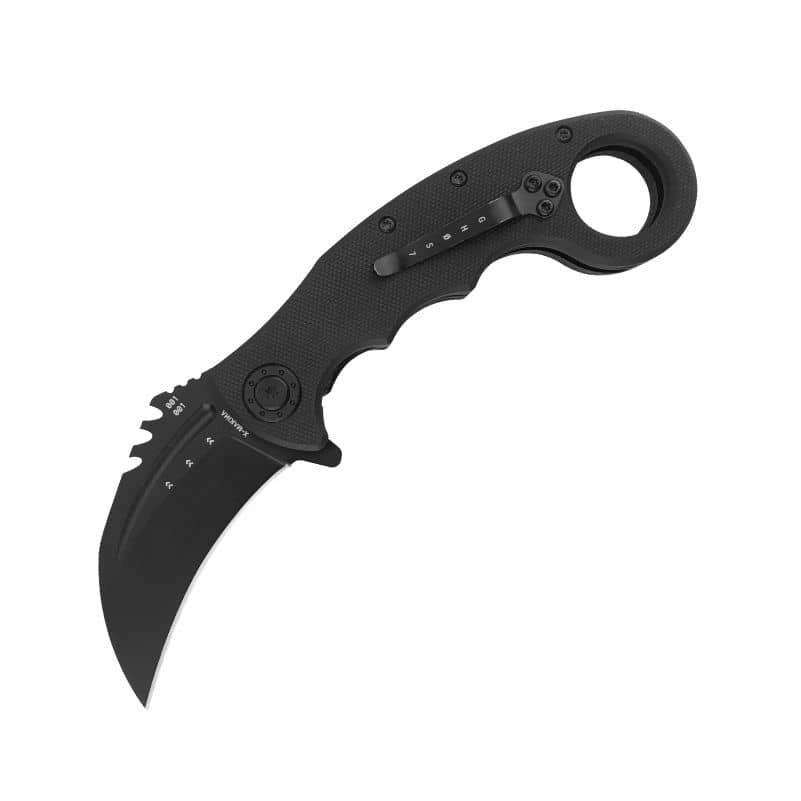
Best uses
- Precision cutting: The Hawksbill excels at precision cutting tasks, such as opening packages, trimming threads, and other detailed work.
- Utility in specific trades: This blade shape is valued in certain trades like carpet and linoleum installation, where it can easily cut and trim materials.
- Safety cutting: The pointed and curved tip minimizes the risk of accidental punctures when working in close proximity to a surface.
Advantages
- Precision: The pointed and curved tip provides exceptional control for detail-oriented cutting tasks.
- Safety: The shape reduces the risk of accidental punctures or damage when working in tight or delicate areas.
- Specialized use: The Hawksbill’s unique design makes it highly effective in specific trades and tasks.
Disadvantages
- Limited versatility: While highly effective for precision tasks, the Hawksbill may not be as versatile for general cutting needs compared to other blade shapes.
- Less slicing capability: The pronounced curve and pointed tip can limit its slicing capabilities.
The Hawksbill blade shape is a specialized tool valued for precision and safety in specific trades and applications. Its unique design makes it ideal for detail-oriented work and tasks that require utmost care.
Leaf shape
The Leaf Shape blade is characterized by a curved and elongated design that resembles the shape of a leaf. It features a gentle curve along the cutting edge and a point that’s slightly rounded or tapered. This design offers a balance of versatility and precision.
Best uses
- General utility: The Leaf Shape is well-suited for various general utility tasks, such as slicing, chopping, and everyday use.
- Precision cutting: Its curved edge allows for precise and controlled cutting, making it a valuable choice for detail work.
- Versatility: The balanced design makes it suitable for a wide range of cutting needs.
Advantages
- Versatility: The Leaf Shape blade is a versatile choice, ideal for numerous everyday tasks.
- Precision: The gentle curve and balanced design provide control for detail-oriented cutting tasks.
- Ease of sharpening: The simple curved design is easy to sharpen and maintain.
Disadvantages
- Lack of specialization: While versatile, the Leaf Shape blade may not excel in specialized tasks like piercing or heavy chopping, where other blade shapes may have an advantage.
The Leaf Shape blade is a practical and versatile choice for those who appreciate a balanced design for everyday use and precision cutting tasks. Its curved edge and balanced point make it an efficient tool for a wide variety of cutting needs.
Modified blades
Not all blades can be accurately categorized under one specific group. Many of them are a hybrid of different types or a variation of certain blade types.
Thus, a variety of modified blade shapes exist. These modified blade shapes often combine elements from traditional designs or incorporate unique features to offer a fresh perspective on functionality and aesthetics. Here are a few examples of modified blade shapes:
- Tanto point variations: Blades with modified Tanto points, such as the American Tanto or the Warncliff Tanto, incorporate changes to the classic Tanto shape, offering variations that provide different benefits in terms of piercing, slicing, or tactical use.
- Wharncliffe variations: Modified Wharncliffe blades might feature subtle curve variations, added belly, or a different tip shape, allowing for a unique combination of slicing and precision cutting capabilities.
- Cleaver variations: Modified Cleaver blades may come in different sizes, with varying amounts of curvature, and can incorporate features like a hollow grind for specific culinary applications.
- Hybrid designs: These blades combine elements of various traditional shapes to create unique and versatile options. For instance, a Drop Point with a subtle Tanto influence might be designed for both slicing and piercing.
Modified blade shapes are the result of continuous innovation and the desire to improve performance and aesthetics. They cater to the diverse preferences and requirements of knife users, from everyday tasks to specialized applications.
Buy Wholesale Knives and Start Scaling up with Us Today
Contact us and connect with a sales rep to get a free quote.
Why is blade shape important to a pocket knife?
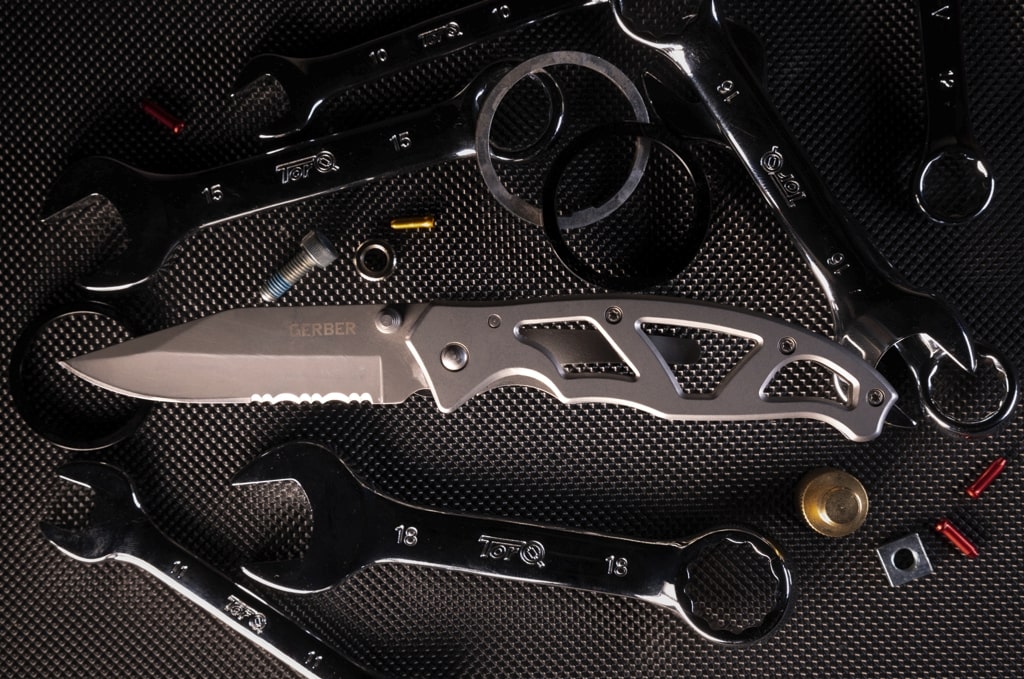
The blade shape of a pocket knife is not merely an aesthetic choice; it plays a pivotal role in defining the knife’s performance, versatility, and suitability for various tasks. Here are some key reasons why blade shape matters:
- Functionality: Different blade shapes are designed for specific functions. For example, a blade shape optimized for slicing may not be ideal for piercing or chopping. By choosing the right blade shape, you can ensure that your pocket knife excels in its intended use.
- Cutting style: The blade shape determines how the knife interacts with the material being cut. A straight edge, for instance, is excellent for clean slicing, while a serrated edge enhances the knife’s ability to cut through tough materials like rope or fibrous vegetation.
- Safety: Certain blade shapes are designed with safety in mind. A rounded or blunted tip, for instance, reduces the risk of accidental punctures, making it safer for everyday carry.
- Versatility: Some blade shapes are more versatile than others, making them suitable for a wide range of tasks. Others are highly specialized, excelling in specific applications.
- Aesthetics: While functionality is paramount, the visual appeal of a blade shape is not to be underestimated. The design of the blade can be a work of art, showcasing the skill of the knife maker and the personal preferences of the owner.
How to choose a blade shape?
Selecting the right blade shape for your upcoming star knife is a crucial decision. It’s essential to contemplate the intended purpose of the knife, while also keeping your target customers in mind. Furthermore, your choice of blade shape should harmonize with the decisions you’ve made regarding the knife’s steel material, opening mechanism, size, and other minor design elements.
- Intended use: First and foremost, define the primary purpose of your knife. Is it for everyday carry, outdoor adventures, culinary applications, or tactical use? Different blade shapes excel in various tasks, so align your choice with the knife’s intended use.
- User preferences: Understand your target audience and their preferences. Some users might prioritize precision cutting, while others may require a robust design for heavy-duty tasks. Consider the ergonomic features and aesthetics that appeal to your audience.
- Safety: Safety is paramount. If the knife will be used in situations where minimizing the risk of accidental injuries is crucial, blade shapes like Sheepsfoot or Clip Point may be preferable due to their safety profiles.
- Specialized tasks: For niche applications, such as tactical, hunting, or specific trades like carpet installation, consider specialized blade shapes designed to excel in those particular tasks.
- Aesthetics: The appearance of a knife can greatly influence a user’s decision. Unique and eye-catching blade shapes, like Tanto or Dagger, may appeal to those who appreciate distinctive designs.
- Cultural and historical significance: Some blade shapes carry deep cultural or historical significance. If your product has ties to a specific culture or tradition, ensure that the chosen blade shape aligns with that heritage.
- User feedback: If you have the opportunity, seek feedback from potential users, or conduct market research to understand the preferences and needs of your target audience.
Outro
The world of knife blade shapes is rich and diverse, offering a wide array of options to cater to various needs and preferences. Whether you’re a knife enthusiast, a collector, or a manufacturer, understanding the characteristics and advantages of different blade shapes is essential in choosing the right tool for the job or creating a product that meets the demands of your target market.
We hope this article has provided you with valuable insights into the world of pocket knife blade shapes. As you explore the possibilities, remember to prioritize functionality, safety, and user preferences to make the best choice for your specific needs.
If you are a wholesale buyer, seeking pocket knives with specific blade designs, why not contact us? We offer a diverse pool of pocket knives, and even can customize one specifically for you. Contact us today to get a quote.
